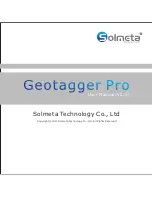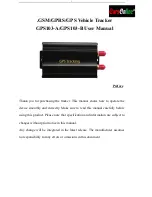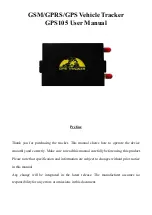
UBX-G7020 - Hardware Integration Manual
Design-in
GPS.G7-HW-10003
Objective Specification
Page 25 of 74
2.4
Clock generation
The UBX-G7020 can be clocked either by a TCXO or by a crystal using the internal oscillator. The crystal
oscillator option represents a low-cost solution where signal acquisition times are typically extended in
case of weak signals. A TCXO is more expensive but provides better performance and is easier to integrate.
The UBX-G7020 has to be configured by the Low Level Configuration regarding the choice of the frequency
source, see section 2.10.2.
A stable and clean clock is the key for good GPS/GNSS performance.
The following tips are helpful for establishing a stable and clean clock:
A stable VDD_IO supply voltage, which supplies in certain cases the TXCO the LDO_X for the clock
domain.
No air convection or fast temperature changes at the TCXO or crystal is essential - cover the TCXO or
crystal with a shield and place the TCXO or crystal in a temperature stable area e.g. far away from a fan
or power consuming ICs. If the TCXO or crystal has to be placed close to the UBX-G7020 chip, make
use of the internal DC/DC converter option to minimize the power consumption of the UBX-G7020 chip
to lower the impact of temperature gradients to the oscillator performance.
Use only appropriate TCXOs or crystals, which are intended for GPS applications, see sections 3.1 and
3.2. This ensures that they are tested to reject frequency jumps and perturbations when temperature
cycled.
2.4.1
Clock accuracies and tolerances
The GPS/GNSS crystal or TCXO reference frequency behavior is essential for the overall GPS/GNSS system
performance. To enable fast weak signal acquisition, tolerances on the crystal specifications have to be
tightened. This leads to the requirement of a TCXO instead of an ordinary crystal.
Tolerances
TCXO
Crystal
Calibration (Initial) Tolerance [+/-ppm]
2
7
Temperature Tolerance [+/-ppm]
0.5
15
Aging after 10 years [+/-ppm]
4
5
Total [+/-ppm]
6.5
27
Table 8: Tolerance Specifications for clock frequency
The UBX-G7020 continuously stores crystal/TCXO calibration values in the backup RAM as long as a backup
voltage (V_BCKP) is available. This allows more accurate compensation for initial TCXO or crystal frequency
offsets when re-starting.
Correct specification of the clock source has two main effects on GPS/GNSS firmware performance:
1. For a cold start scenario the maximum total tolerance as summed up in Table 8 defines the maximum
frequency search span. If the actual frequency error of the UBX-G7020 clock source is larger than indicated by
the system configuration, the signal may never be found.
2. For aided or hot start scenarios the temperature tolerance is crucial. It is also important that the
information about the actual calibration error (including aging) is available. This is most easily accomplished
by keeping the backup RAM (in backup domain) alive. If no signal is found the frequency search space is
subsequently widened up to the maximum search span used in cold start.
In any case, a frequency search always starts with the assumption of zero reference frequency error and
subsequently widens the frequency search span up to the configured maximum. The closer the reference
frequency is to its nominal value, the faster will a search deliver its results.
















































